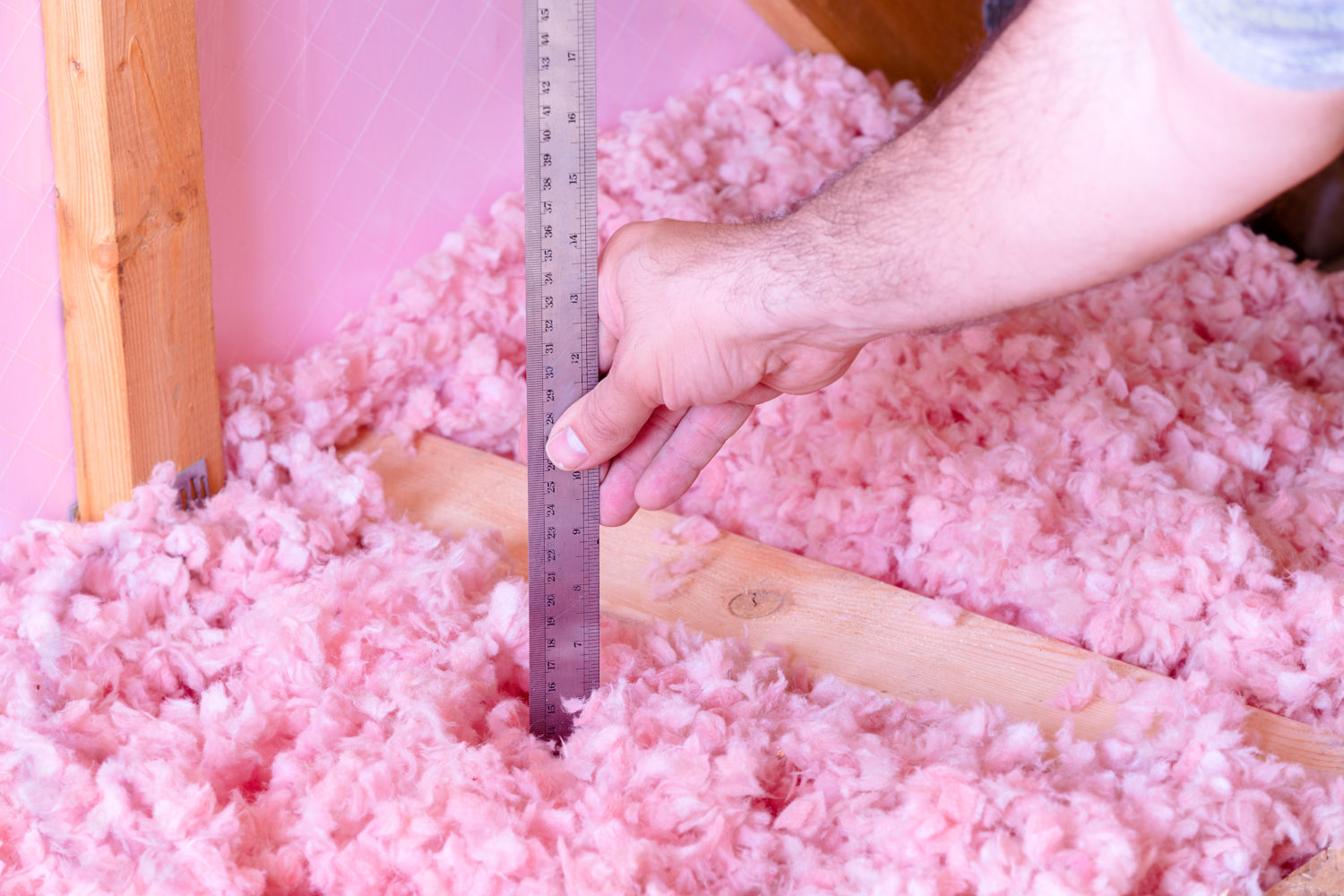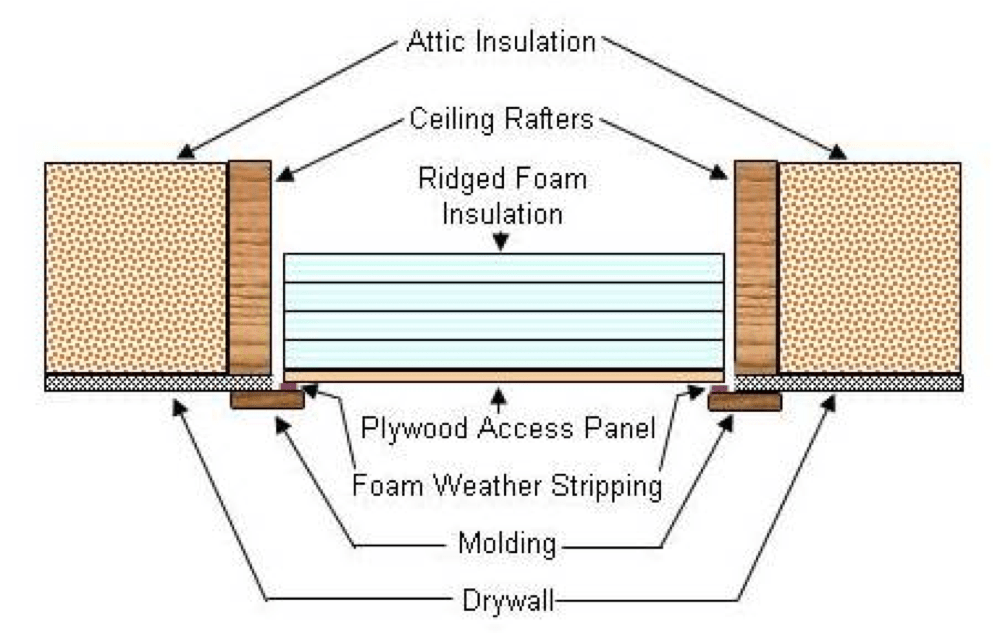Many homeowners ignore their attic except for the quick trip to retrieve holiday decorations once a year, but ignoring your attic comes at a price through wasted energy and money. The U.S. Department of Energy (DOE) estimates that as much as 85% of the conditioned air lost in a house passes through the attic. Boosting attic insulation and air sealing can lower heating and cooling costs by 10 to 50% depending on the current level of insulation.
Insulation

Checking the energy efficiency of their house by measuring the thickness of fiberglass insulation in the attic
Over 21,000 homes in the Charlottesville-Albemarle area were built before 1970 – the first year Virginia had code requirements for insulation. That’s a lot of attics with potentially very little insulation and no air sealing.
Go into your attic and take a look. You can even take a ruler or tape measure to measure the depth of insulation. One quick way to determine if you need more is to look across the length of your attic. If your insulation is just level with or below your floor joists, and you can see the joists easily, you should add more.
It is also important that the insulation be evenly distributed with no low spots. For example, sometimes there is enough insulation in the middle of the attic and very little along the eaves. When adding insulation pull up and dispose of any existing material that is compressed, water stained, or moldy.
The efficacy of an insulation material is measured by its R-value. The higher the number in the R-value, the more effective the insulation is. Minimum code in Virginia is R-38 or about 12 inches, but we, along with the DOE recommend homeowners insulate to at least R-49 or about 14-15 inches of total depth.
Air sealing
Proper depth and installation of insulation is one part of creating an energy efficient attic, but insulation can only be effective in the absence of air movement. Gaps of any size, due to utility penetrations, recessed light fixtures, furnace flues and duct chases are effectively holes in your ceiling that suck expensive heated or cooled air into your attic and to the outside. Air sealing an attic can be a daunting DIY project but the benefits can be substantial. The EPA estimates that the typical American home has enough leaks, holes and gaps to be equal to an open window every day of the year.
Most of the gaps letting conditioned air escape into your attic are buried in insulation, but you can still see evidence of drafts. Look for areas where the insulation is darkened or dirty which happens as a result of filtering dusty air from the house – this will most likely be near wiring holes, plumbing penetrations, recessed lights, furnace flues or duct chases, and attic hatches. In cold weather, you may see frosty areas in the insulation caused by warm, moist air condensing and freezing as it hits the cold attic air, or the inverse, areas of your roof that thaw much faster than others on frosty mornings.
Investigate large penetrations like plumbing stacks or flues by pulling back the insulation. If there’s a gap present, it should be sealed.
If after locating areas in need of air sealing, you are ready to dive into the DIY route, there are many resources that detail exact methods like stuffed bags, rigid foam, reflective foil and flashing. Plug the big holes first, such as, open stud cavities, dropped soffits and behind kneewalls. Then move onto to sealing smaller penetrations with spray foam.
that detail exact methods like stuffed bags, rigid foam, reflective foil and flashing. Plug the big holes first, such as, open stud cavities, dropped soffits and behind kneewalls. Then move onto to sealing smaller penetrations with spray foam.
Make sure to allow for proper clearance when sealing around anything that generates heat, like furnace flues or recessed lighting. Building codes usually require one inch of clearance from metal flues and two inches from masonry chimneys to any combustible material, including many insulation materials.
Don’t overlook the attic entryway. For an attic hatch in the ceiling, affix rigid foam insulation to the attic side of the hatch or door and add weatherstripping around the perimeter. If your attic has fold down stairs, the best solution is an air sealed and insulated attic stairs cover. For a walk up attic with a door, add a sweep and weatherstripping.
If DIY is not your thing, employing a professional, while more expensive, can pay off in the long run. And if you’re not even sure what attention your attic needs, a professional home energy assessment is a smart first step.
